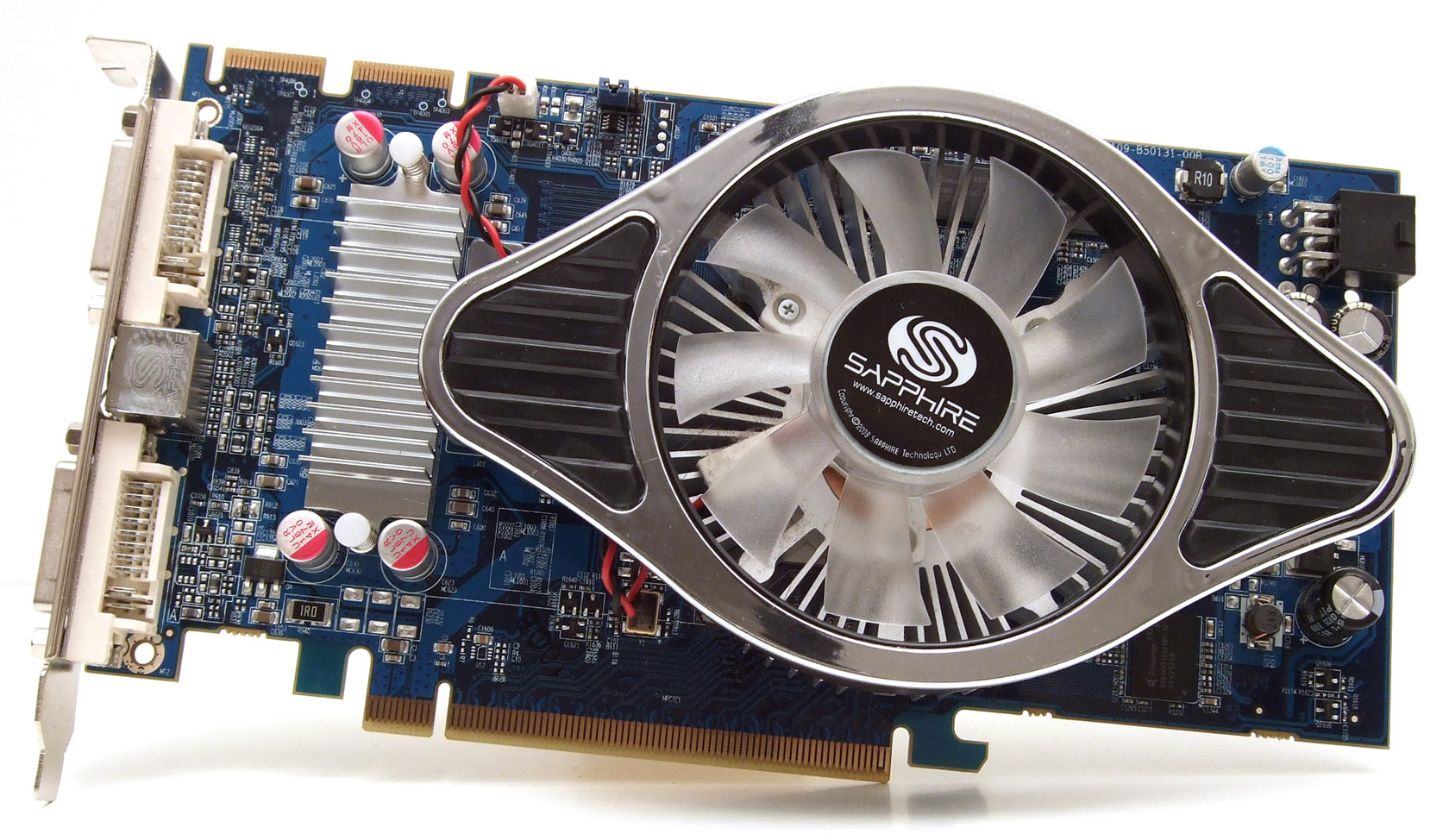Roundup: Mainstream Graphics Cards From ATI And Nvidia
Sapphire HD 4830 512 MB (Radeon HD 4830, 512 MB)
To see all the photos in our gallery for this card, click the image below.
The Radeon HD 4830 is a less powerful variant of the Radon HD 4850. It’s a bit of a dark horse, but an excellent alternative to the Radeon HD 4770, which has encountered significant supply issues. Its big improvement comes from a 256-bit memory bus, which doubles the 128-bit bus that the Radeon HD 4770 uses. At the same time, it's use of GDDR3 memory, sacrificing half of its peak bandwidth.
In our current benchmark suite, the Radeon HD 4830 shows no advantages compared to the Radeon HD 4770 as a result. Only at 1920x1200 resolution with 8x AA does this card manage to keep up. At other resolutions, it runs somewhat slower, generating performance numbers about 6% lower than the Radeon HD 4770 overall. This is easily offset with a bit of overclocking, but should still be noted for the folks who prefer to run at stock frequencies.
Here again, Sapphire’s sample adheres to the ATI reference PCB design, with clock rates of 575 MHz for the GPU and 900 MHz for the graphics RAM. This graphics chip supports DirectX 10.1 and comes armed with 640 stream processors, just like the HD 4770, but includes 512 MB of GDDR3 (whereas the Radeon HD 4770 uses GDDR5).
The cooler is large enough to make this card two slots wide and includes no air channel, so warm air is exhausted into the PC case. Overall, it’s a temperature-efficient design—in 2D mode, temps measure out at 34° C, and under heavy 3D loads, temps top out at only 61° C. When it comes to noise levels the 4830 is louder than the other cards tested here, and you must be able to tolerate more fan noise. It achieves a low of 40.5 dB(A) in 2D mode, ranging up to 41.2 dB(A) in 3D mode. At idle, clock rates are reduced to 160/250 MHz (GPU/RAM).
When it comes to power consumption, the energy-efficient Radeon HD 4770 consumes 12 W more in 2D mode, because its latest drivers don’t reduce clock rates. Under 3D heavy loads, things look different—the HD 4830 consumes 31 W more than the Radeon HD 4770, attributable to its GPU’s 55 nm process technology (the Radeon HD 4770’s GPU is based on a 40 nm process).
The card is 8.27"(21 cm) long and uses a six-pin PCIe power connector. You’ll find a Y-connector in the retail package for component video, plus an adapter for composite video, a power cable, and an HDMI adapter for its DVI output.
Get Tom's Hardware's best news and in-depth reviews, straight to your inbox.
Current page: Sapphire HD 4830 512 MB (Radeon HD 4830, 512 MB)
Prev Page Sapphire HD 4770 512M (Radeon HD 4770, 512 MB) Next Page Zotac GeForce 9800 GT 512 MB (GeForce 9800 GT, 512 MB)